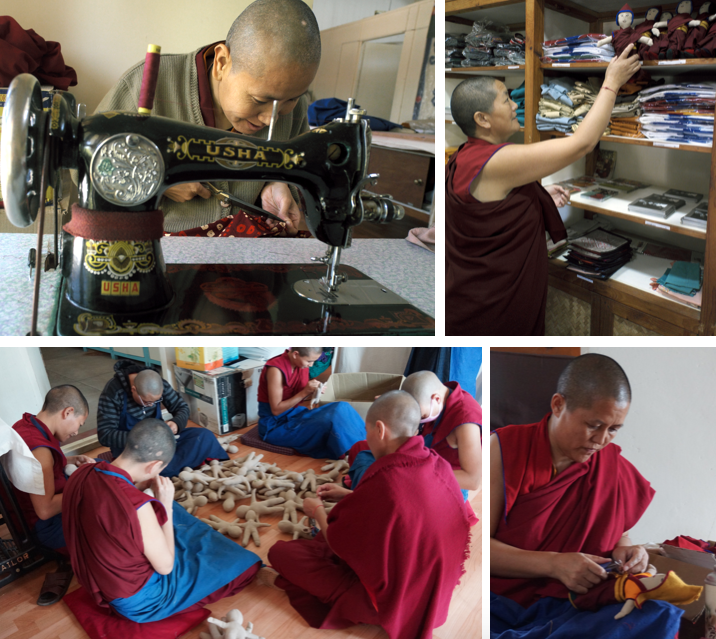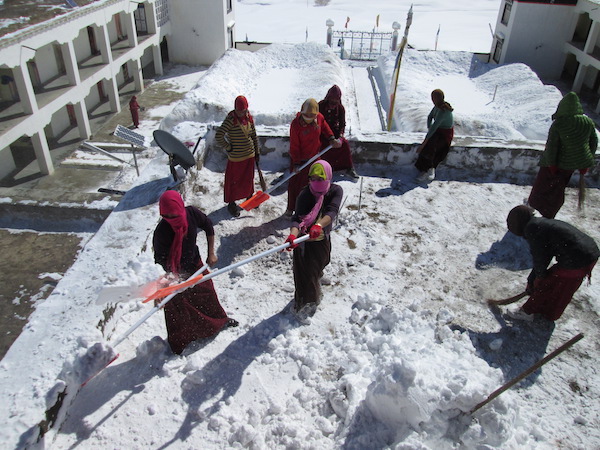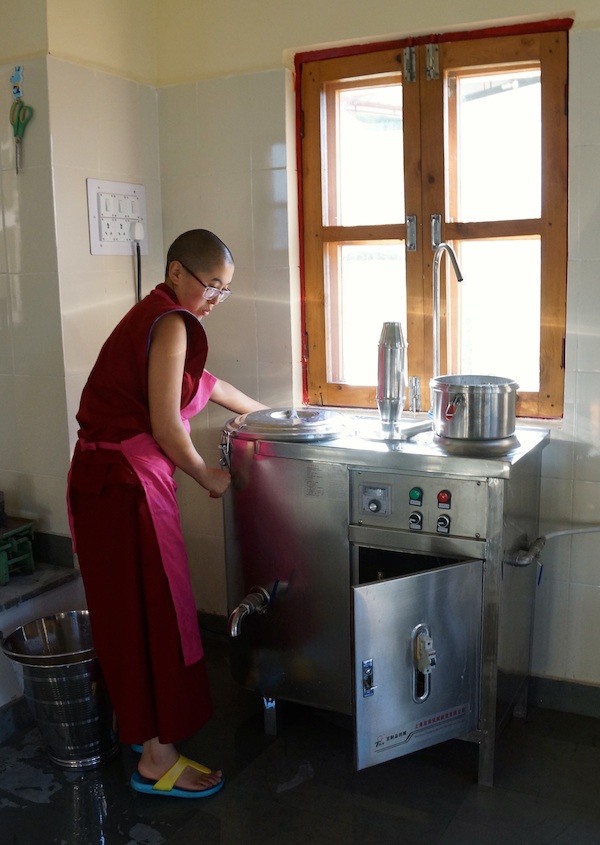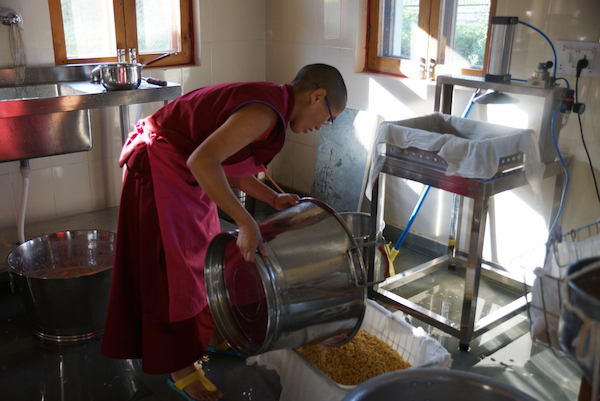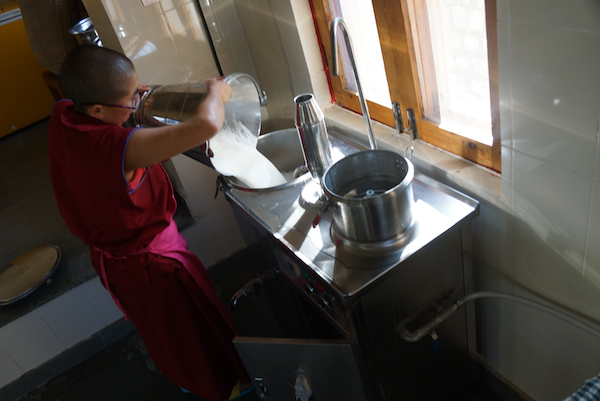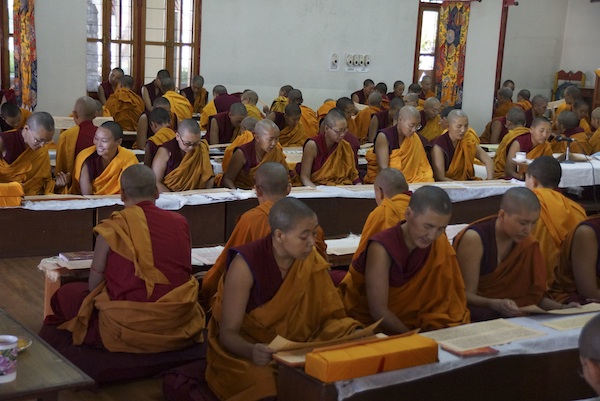The other day we published Part 1 of Daily Life of Tibetan Buddhist Nuns.
Since we had so many great photos, we decided to do Part 2 to give you a better idea of the many tasks that the nuns do in addition to their studies and practice.
As we said in Part 1, nunneries are complex institutions requiring a lot of hands-on work by the nuns to function smoothly. As you will see from the photos below, the nuns take an active role in running the nunneries. For instance, at Dolma Ling Nunnery, the largest of the 7 nunneries supported by the Tibetan Nuns Project and home to almost 250 nuns, there is a nuns’ committee that oversees the various aspects of nunnery life.

Nuns at Geden Choeling Nunnery in Dharamsala taking exams. In addition to their studies and Buddhist practice, Tibetan Buddhist nuns perform many other tasks to keep their nunneries running smoothly.
These leadership roles include kitchen managers who do the purchasing for the kitchen and are often directly involved in cooking; treasurers who are responsible for nunnery finances, running the nunnery store, and making purchases for the nunnery; and the keeper of the temple who makes the daily water offerings, lights the butter lamps, escorts visitors, and keeps the temple clean.
One of our goals at the Tibetan Nuns Project is to help the nuns achieve more self-sufficiency through skill building and income-generating projects. The nuns at Dolma Ling make a range of handicrafts such as prayer flags and malas for sale in the nunnery shop and through our online store. In spite of the various self-sufficiency projects, the nunneries still need outside support. The nuns are not in their own country. They are refugees and do not have access to major sources of revenue within India.
At Sherab Choeling Nunnery in the remote region of Spiti in the Indian Himalayas, the nuns must often shovel the snow in winter. This photo shows them shovelling the nunnery roof. During the winter of 2014/15, the weather was so severe that the nunnery ran out of cooking gas. For over two months the nuns had to rely solely on firewood to cook. The heavy snowfalls in the area meant that the nuns were unable to get supplies and all the local villages were cut off. In order to fetch water from the nearby village, the nuns had to clear a path through waist-deep snow. Continue reading

